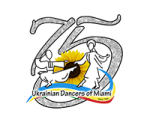History In Brief
A (very brief) history of Ukraine

Until fairly recently, most people hearing the name Ukraine probably thought, at best, it was a brand new country only a short time ago extracted from the Soviet Union, and at worst, thought it was just part of Russia. Events since February 2022 have certainly enlightened the world, but there is still so much to be shared. And, while many might believe that Russia is the source of the Slavic universe, it could more accurately be attributed to Ukraine, whose Trypillian culture dates back to 4800 BC.
The Carpathian Mountains rise in the west and the Crimean Mountains in the south, but the heartland of Ukraine—slightly larger than France—is the rich flat earth that stretches for 1,600 kilometers, known as the steppe. Once called the “breadbasket of the Soviet Union”, the ancient-but-fledgling nation also has huge deposits of coal and iron that feed heavy industry, particularly in the Donbas (Donets Basin) and Kryvyy Rih regions.
Such natural wealth invited conquerers. In 988 Vladimir the Great adopted Christianity—which evolved into Russian Orthodoxy—to unify the Kievan Rus, a confederation of Slavic peoples. The Mongols overran the land in the 13th century, followed by the Lithuanians in the 14th century. Poland
asserted dominion in 1569. Defying their Polish masters, rebel-minded peasants—the Cossacks—gathered under warlike leaders called hetmans in the vastness of the steppe. After a revolt led by Bohdan Khmelnytsky, the Cossacks formed their own state in 1649. But in 1654—still fighting the Poles—they entered a pact with Russia, which soon exerted control.
At its greatest extent, about 1880, the Russian Empire encompassed 85 percent of present-day Ukraine; the remainder was under the influence of Austria-Hungary. After the Russian Revolution, Ukraine enjoyed brief independence. Despite Lenin’s promises, however, the Red Army invaded, and by 1920 most of Ukraine was Bolshevik ruled. Joseph Stalin, fearing Ukrainian nationalism, killed the intelligentsia, and, through his policy of collectivization, engineered a famine in 1932 and 1933 (known as the Holodomor) that took at least five million lives. Nazi occupation scourged the country during the “Great Patriotic War.” The republic lost 7.5 million people, 4 million of them civilians and 2.2 million deported to Germany as laborers. After World War II, Soviet rule prevailed.


Ukraine suffered the world’s worst recorded nuclear accident. On the morning of April 26, 1986, reactor No. 4 at the Chornobyl Nuclear Power Plant, 80 miles north of Kiev, exploded, sending radioactive contaminants three miles up into the atmosphere and out over parts of Europe, Asia, and North America.
A political meltdown occurred in December 1991, when 90 percent of Ukrainians voted for independence, in effect dissolving the Soviet Union. Since then, Ukraine faced difficult challenges in its transition to nationhood: the disposition of the Black Sea fleet, the question of control of Crimea, and an outstanding debt owed for Russian oil and natural gas. Events of the EuroMaidan—beginning in the Fall of 2013 and leading into the attacks of 2014 and the Russian “annexation” of Crimea—were but a preview of the invasion by Russia in 2022. We continue to pray for its conclusion and victory for Ukraine.
Despite the centuries of others wanting to control Ukraine, her people have endured. Folk art and music have flourished, religion has not been extinguished, progress and prosperity have not been abandoned. Ukraine is still here, still very much alive and independent, and we will never give up on her freedom.
Portions of this text exerpted from National Geographic Atlas of the World Revised Sixth Edition, 1995
